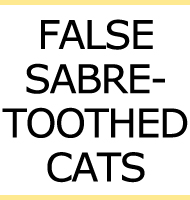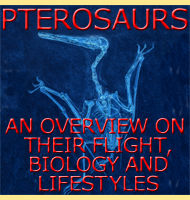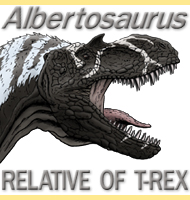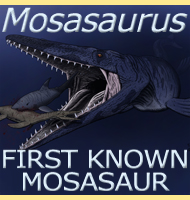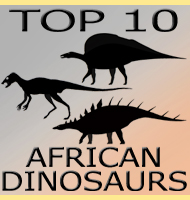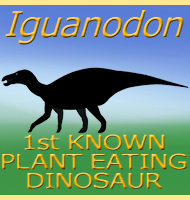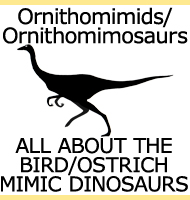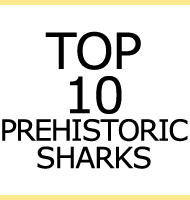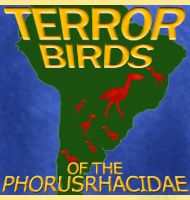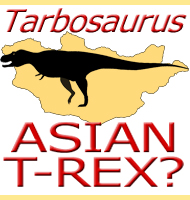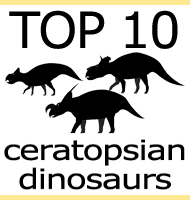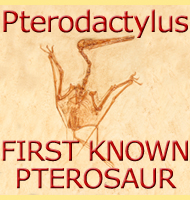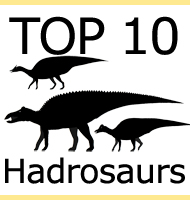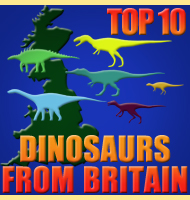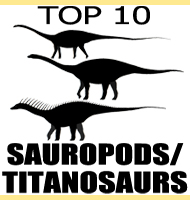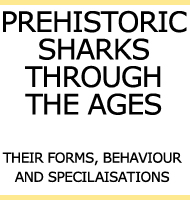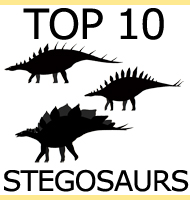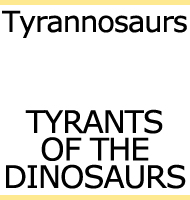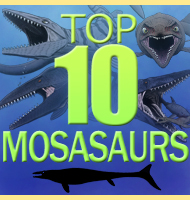


Top 10
Tyrannosaurs
Featuring tyannosaurids of the Tyrannosauridae as well as the more primitive tyrannosauroids of the Tyrannosauroidea
10 - Guanlong

As far as tyrannosaurs go, Guanlong is considered to be a proceratosaurid tyrannosauroid. In more simple terms this means that Guanlong is a basal tyrannosaur that appeared at the same time as other primitive tyrannosaurs, yet may not actually be a direct ancestor of the later large tyrannosaurs that were roaming around Asia and North America in the late Cretaceous. Never the less, Guanlong is still regarded as a basal tyrannosaur, and is a very good example of how these fearsome predators actually started out quite small.
9 - Bistahieversor
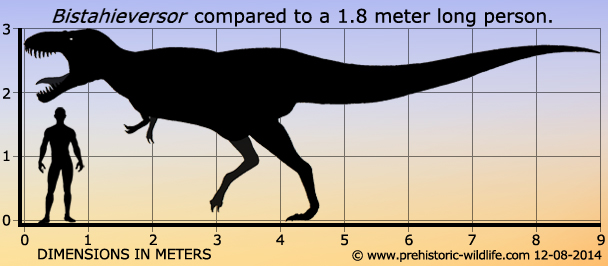
Named
in 2010 Bistahieversor was among several
tyrannosaur genera named
in the early years of the twenty-first century. The discovery of
Bistahieversor may have opened up a whole new
sub-group of
tyrannosaurs, those that lived in the southern portion of the
landmass known as Laramidia. Back in the Cretaceous, the North
American continent was divided into two by the Western Interior Seaway
which submerged central North America all the way from Canada to
Mexico, with the western land mass known as Laramidia, and the
eastern Landmass known as Appalachia.
Bistahieversor
was discovered in New Mexico, meaning that it lived in southern
Laramidia, a significant discovery in itself since most tyrannosaur
fossils at that time had been discovered much further north,
particularly around what is now the northern United States and
southern Canada. An additional discovery about Bistahieversor
though
was that the snout, the portion of the skull in front of the eyes,
was proportionately shorter than the known skull proportions of more
northern tyrannosaurs. Then only one year later another tyrannosaur
genus named Teratophoneus
was discovered in Utah and it too had a snout
that was proportionately shorter than these living further north.
These two genera were subsequently the start of a theory that the
tyrannosaurs of southern Laramidia might have been isolated from their
North American cousins by rising mountain ranges and began developing
along different lines.
8 - Lythronax
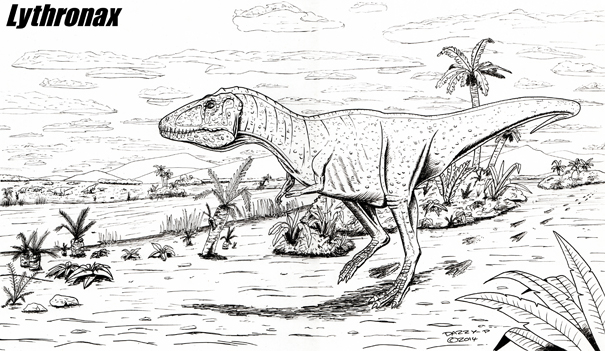
Another tyrannosaur named in the early twenty-first century, Lythronax has been credited as one of the earliest known appearances of an actual tyrannosaurid, with other tyrannosaurs appearing earlier in the Cretaceous being designated as more primitive tyrannosauroids. The Lythronax holotype was recovered from Utah, which means that Lythronax lived in southern Laramidia. Like the aforementioned Bistahieversor and Teratophoneus, Lythronax too had a comparatively short but deep snout.
7 - Dilong
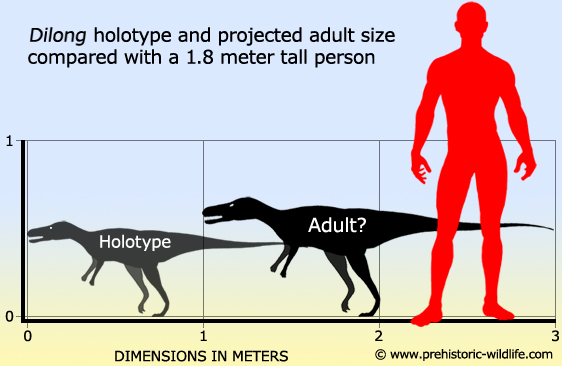
Hailing from China, Dilong was a very small tyrannosaur that lived during the early Cretaceous. What otherwise might have been an unassuming little dinosaur still managed to shake the foundations of tyrannosaur and theropod dinosaur study, Dilong had feathers! The feathers that were on Dilong were small and really more like hairs, and were almost certainly for the purpose of heat insulation (though they may have also been coloured for additional display). The discovery of Dilong was the catalyst to the question, were other tyrannosaurs feathered? We still don’t know how to answer that question properly, there is evidence to suggest that they were and were not, and may have varied depending upon age with smaller juveniles being feathered for insulation but adults losing them because they were not necessary. But as we’ll see, it might not be that clear cut.
6 - Appalachiosaurus
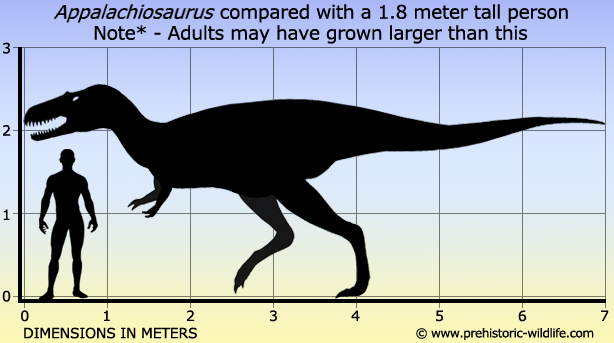
Whereas most tyrannosaurs in North America are known from fossils in what was once the western landmass of Laramidia, the holotype fossils of Appalachiosaurus were actually discovered in the eastern landmass of Appalachia, leading to the name Appalachiosaurus which translates to English as ‘Appalachian lizard’. The discovery of Appalachiosaurus has revealed that tyrannosaurs were probably roaming across both sides of North America during the Cretaceous. The holotype specimen of Appalachiosaurus was found to have a tooth from the giant crocodile Deinosuchus stuck in one its tail vertebrae.
5 - Eotyrannus
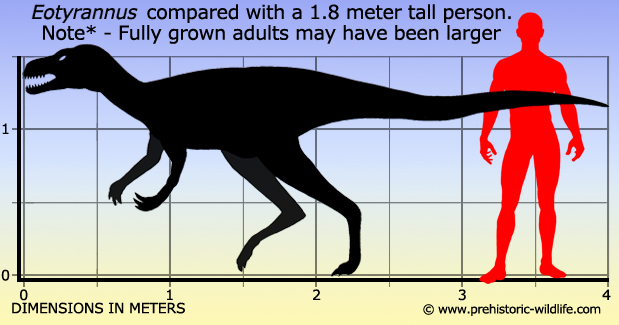
For the best part of a century the tyrannosaurs were popularly regarded as large predatory dinosaurs that hunted in what we now call eastern Asia and North America. What makes Eotyrannus different is that it didn’t live in Asia or North America, the holotype fossils of this genus were discovered in England! Not only does this make Eotyrannus the first tyrannosaur genus to be discovered in the British Isles, but the first tyrannosaur to be discovered on the European continent. The holotype fossils of Eotyrannus indicate an individual that was about four meters long, but this individual was also a juvenile, and fully grown adults would have certainly been larger, though exactly how much larger is difficult to say without a second, ideally adult specimen. Being larger than four meters would be just as well however as the carcharodontosaur Neovenator and the spinosaur Baryonyx are both known from the same fossil formation as Eotyrannus, and both of these are known to have been much larger than the holotype individual.
4 - Albertosaurus
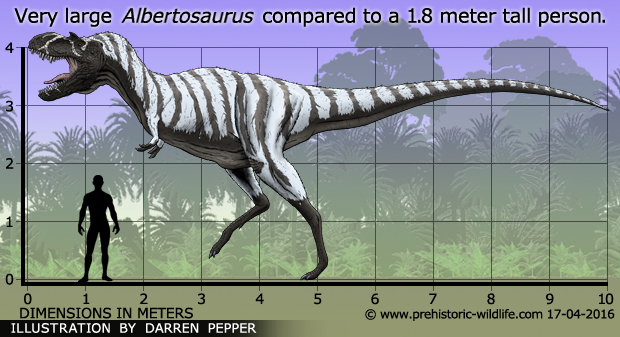
Albertosaurus
is one of the more famous tyrannosaur genera from North America, and
one of the last known to live at the end of the Cretaceous before the
dinosaurs died out. With the largest individuals reaching sizes of
ten meters long, Albertosaurus had a relatively
gracile (light)
build for a tyrannosaur and was similar to the genus Gorgosaurus
(which some palaeontologists consider to be the same genus as
Albertosaurus, though others insist that they were
different).
The
main controversy concerning Albertosaurus is the
theory about if they
were pack hunters, a theory stemming from the Dry Island bonebed.
Situated near the Red Deer River in Alberta, Canada, the bonebed
was first discovered in 1910 by the famous American palaeontologist
Barnum Brown, yet was surprisingly forgotten about until it was
re-discovered in 1997 by an expedition from the Royal Tyrrell
Museum of Palaeontology. This bone bed has the remains of at least
twelve, but possibly as many as twenty-six Albertosaurus
individuals. In addition to this great number, the individuals
range from very small juveniles, to very large ten meter long adults.
There
are many ways that such a bonebed could be read but the accumulation of
such a large concentration of all the same dinosaur and not anything
else does suggest that this is bonebed is not the result of a random
placement. If it represents the remains of a family pack is
controversial and certainly not certain, but other large theropod
groupings have since been found though certainly not yet in such
numbers as the Albertosaurus bone bed.
3 - Tarbosaurus
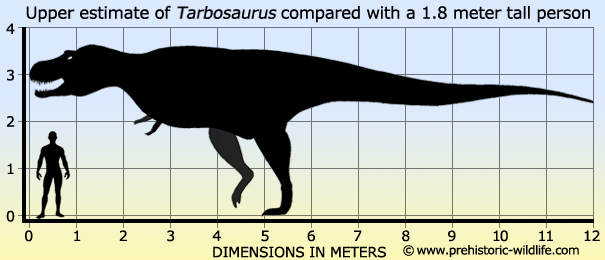
With
the exception of Alectrosaurus,
the tyrannosaurs were regarded as
primarily North American dinosaurs for the first half of the 20th
century, then in 1955 things changed with the description of
Tarbosaurus. The problem with Alectrosaurus
was that it was only
named from very partial fossil material that had been perceived to be
similar to Gorgosaurus from North America, but
further details were
impossible. The Tarbosaurus holotype however was
much more complete,
so much so that when it was first named it was described as a species
of Tyrannosaurus, Tyrannosaurus bataar.
It
was not long before the specimen was renamed Tarbosaurus,
but the
debate about whether Tarbosaurus should be a
distinct genus or a
species of Tyrannosaurus has been ongoing ever
since as the differences
between them are only slight. Most modern thinking however seems to
support keeping Tarbosaurus as a distinct genus,
and studies
associated with the aforementioned Lythronax above
suggest that the
Asian tyrannosaurs are of a group that are distinct (but still
related) to the North American tyrannosaurs.
Tarbosaurus
is so far known mostly from Mongolia, with some remains from China.
The genus Alioramus
which is also known from Mongolia, was once
considered to be a juvenile Tarbosaurus, but new
specimens of this
dinosaur prove that it is a distinct genus from Tarbosaurus,
though
one that was closely related to it.
2 - Yutyrannus
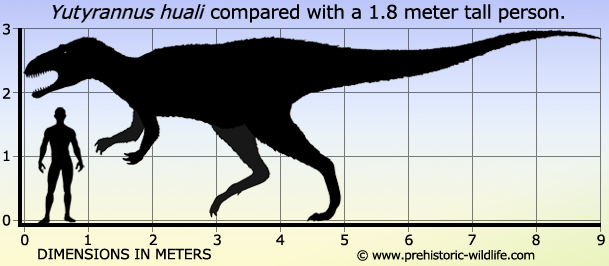
When
Dilong was found it led to speculation that smaller
tyrannosaurs and
juveniles of larger ones probably had feathers. Then in 2012
three individuals of a new tyrannosaur genus were found in Aptian aged
rock in China. All three of these tyrannosaurs had feathers, and
the largest individual was up to nine meters long! The idea that only
small tyrannosaurs had feathers is now out of the proverbial window,
but Yutyrannus may be an exception not the rule.
Analysis
of the fossil site suggests that Yutyrannus
came from a colder
climate and thus necessitated the need for feather insulation when
fully grown. By comparison the limited known skin impressions of
tyrannosaurs from North American indicate that at the time of death
these individuals had bare skin, and not an extensive covering of
feathers like Yutyrannus. It could be because the
North American
tyrannosaurs were living in a warmer climate, or perhaps after many
more millions of years of evolution they lost their feathers, or
perhaps even developed medical conditions that caused feather loss
which then partly resulted in their deaths. What is known for certain
is that when Yutyrannus was described it gained the
title of largest
known feathered dinosaur, comfortably beating the previous record
holder, a therizinosaur
named Beipiaosaurus.
The
description of feathers upon such a large dinosaur can easily
overshadow the overall significance of a discovery. When Yutyrannus
was found, it was three individuals, all of different ages that
were found together. Like with Albertosaurus,
this raises the
question, did Yutyrannus hunt in packs? Perhaps
as a small family
unit?
1 - Tyrannosaurus

What
else could it be? Tyrannosaurus has been by far
the most popular
dinosaur ever since it was introduced to public in the early 20th
century, and since this time whenever a film, book or video game
needs a dinosaur for a primary antagonist, nine times out of ten it
will be a Tyrannosaurus.
Partly
because of the popularity, Tyrannosaurus has had
to put up with a lot
bad publicity with a lot of people accusing it of only being an
‘obligate scavenger’, despite the fact that many of the arguments
that claim to 'prove’ this can easily be dismissed as nonsense.
This is not to say that Tyrannosaurus never
scavenged carcasses, it
would be very strange if Tyrannosaurus didn’t
because scavenging is
actually normal behaviour for all meat eating animals. But taking
advantage of the occasional 'free meal’ is very different from only
scavenging and never hunting.
For
the best part of a century Tyrannosaurus was
regarded as the largest
known theropod dinosaur, and it was not until later in the twentieth
century that Tyrannosaurus lost this title. Tyrannosaurus
is still
comparable to the largest theropods, and as of 2014 is still the
largest known tyrannosaur. Tyrannosaurus is also
regarded as having
potentially the most powerful bite of not just any dinosaur, but also
any known land animal of all time. This is thanks largely to the size
and width of the skull which allows for larger jaw closing muscles.
In addition to that, the skull width and eye placement would have
allowed for visual ability far surpassing that of any human, and even
birds of prey like eagles which are regarded as having some of the best
eyesight in the known animal kingdom.
Random favourites
 |
 |
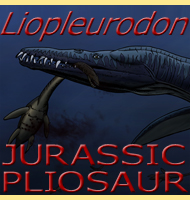 |
 |
